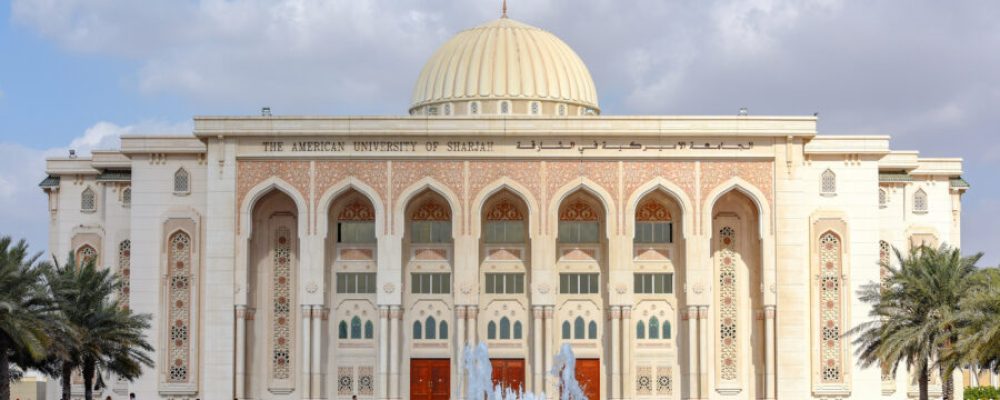A student team from American University of Sharjah (AUS) won first place last month at the International Telecommunication Union (ITU) GeoAI Challenge, a global competition that addresses real-world geospatial problems by applying artificial intelligence (AI) and machine learning (ML) to advance the United Nations Sustainable Development Goals (SDGs).
The team developed a machine learning model to accurately classify cropland extent and map crop intensity using a cost-effective approach in four test regions: Sudan, Iran, Sri Lanka and Mozambique. They produced two maps, one on cropland extent, which indicated the presence and absence of crops, providing a reliable fundamental layer to understanding the dynamics of crop activities; and a crop intensity map that looked at the number of crop planting cycles in one year in the assigned locations. The maps are considered essential to many applications in agriculture as well as other relevant disciplines such as natural resources, environment, health and sustainability. The competition focused on addressing SDG10: Reduced Inequalities and SDG17: Partnerships for the Goals.
The winning team comprised AUS computer engineering students Maya Haj Hussain, DiaaAddeenAbuhani, Mohamed ElMohandes and Jowaria Khan under the mentorship of Dr. Imran Zualkernan, Professor and Head of the Department of Computer Science and Engineering, and Dr. Tariq Ali, Professor in Civil Engineering at AUS.
“We divided the challenge into two tasks. I worked along with ElMohandes on cropland extent problems, which focused on classifying crops and non-crops, from sample collection to building and testing different machine learning models. Meanwhile, Hussain and Khan worked on crop mapping. The project provided us with good experience in dealing with remote sensing data, especially in the field of agriculture. It also helped us as a team understand each other and build trust before we start working on our senior design projects,” said Abuhani.
The project required the students to carry out extensive research.
“The topic was unfamiliar to all of us, so we worked together every step of the way to figure it out. The work included completing a literature review on the topic, figuring out how to collect time series data (known as time-stamped data), and then figuring out how to preprocess and clean that data. It also included putting together an algorithm to find the number of crop cycles in a Normalized Difference Vegetation Index (NDVI) time series to address crop intensity and how to successfully run our trained classifiers on the Google Earth engine,” explained Hussain.
The wealth of knowledge the students gained from the competition was tremendous, particularly in the use of software platforms such as Google Earth engines, understanding concepts of geospatial analysis, and mapping and building algorithms. The team attributed their ability to navigate these new areas of research to the foundational education they received at AUS.
“AUS teaches students how to work in challenging and demanding environments as well as encourages self-learning. This is something that has really helped me get through this project, particularly with the short deadline we had and the new concepts with which we had to work,” said Khan.
This was further emphasized by Abuhani, who said: “The engineering curriculum at AUS fosters critical thinking, problem-solving, and most importantly, teaches lifelong learning skills, which help students embark on educational journeys independently. In our case, we employed these skills during our research on cropland and crop intensity mapping, which were entirely new subjects for us.”
Having compiled the entirety of the research for submission and served as a student speaker during the live presentation of the project in the competition, ElMohandes said that working in a team was a great experience. “We supported one another especially when one of us was unsure of the next steps. We all took different courses at AUS so the exchange of ideas, communication and brainstorming to solve problems was very helpful. Looking ahead, this project can be further enhanced by applying more machine/deep learning models and experimentation,” he said.
Khan added: “It feels surreal that we have won, especially since the competition was held on quite a large scale with 36 teams competing alongside us globally. We can now use the ideas and skills we learned during the course of this project to perhaps write conference papers to publish in reputable journals.”
The Department of Computer Science and Engineering (CSE) in the AUS College of Engineering offers a Bachelor of Science in Computer Engineering, a Bachelor of Science in Computer Science, and a Master of Science in Computer Engineering. The CSE curriculum focuses on artificial intelligence, data science and smart cities. AUS is ranked among the top three in the UAE and top 500 universities globally for computer science and information systems, according to QS World University Subject Rankings (2022).




